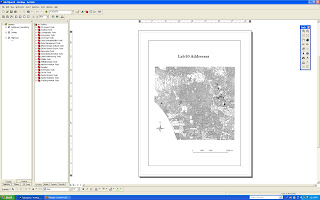Projecting a map is a method of representing the surface of the earth on a flat plane. Map projections are essential for producing various types of maps. Map projections are used to most accurately illustrate the different assets of the planet. Equidistant protects distance from a point or line. There are a variety of map projections, Conformal is one map projections, and it protects angles locally. Equal-area protects area.
For the conformal projection I used Gall-Stereographic and Mercator. These maps projections help protect the shape of small objects, but alter larger objects. One use form theses two projections are, they allow the viewer to understand the basic representations of the world’s countries. One downside for these projections is the size. For example the size of the United States in the projection shows the United States almost as big as the entire continent of Africa. In fact, the continent of Africa is almost 80 percent larger than or more than 3 times as big as the United States. The distance from Baghdad to Washington D.C. in the Gall-Stereographic projection is roughly 9,577 kilometers. In the Mercator projection the distance is from Washington to Baghdad is roughly 13,538 kilometers.
For the Equal-Area projections I used the Hammer Aitoff and Cylindrical projections. These projections are good when you are trying to figure out the area of specific country or landmass. When I did the measurements, the distance from Washington D.C. to Baghdad came out to 13,524 kilometers in the Cylindrical projection. In the Hammer projection the measurements from Washington D.C. came out to 11,200 kilometers. In the Equidistant I choose the Carree and the Sinusoidal projections. One interesting fact about the Sinusoidal projection is it can be either an Equal-Area projection or an Equidistant projection. The Carree projection is an extremely simple and basic projection. In the Carree projection the distance from Washington D.C. to Baghdad was roughly 13,529 kilometers. In the Sinusoidal projection the distance from Washington D.C. to Baghdad was approximately 10,833 kilometers.
There are a variety of map projections that have their benefits, but with each map projection there are downsides. Equal-Area, Conformal, and Equidistant projections work best with different variety of maps someone is trying to convey. It is up to the creator to distinguish from which projection they think might best illustrate their map.
1. What is an ellipsoid? How does an ellipsoid differ from a sphere?
An ellipsoid is a sphere that is slightly flattened at the poles. It is wide at the poles and flat on the north and south. An ellipsoid is also accepted as the best geometric model of the earth’s surface
2. What is the imaginary network of intersecting latitude and longitude lines on the earth's surface called? The imaginary network that intersects latitude and longitude on earth’s surface is called a Geographic Coordinate System.
3. How does the magnetic north differ from the geographic North Pole? The magnetic north is where a compass points to. The Geographic North Pole is located at one of the poles of the earth's axis of rotation. There are two components to datums, a specified ellipsoid, and a set of surveyed coordinate locations specifying horizontal positions or vertical positions on the surface of the Earth.
4. Why are datums important? Briefly describe how datums are developed. A datum is a 3-dimentional frame of reference used to determine surface locations. It attempts to approximate the ellipsoid.
5. What is a map projection? A map projection is used to transfer locations from the curved earth's surface onto a flat surface.
6. What is a developable surface? A developable surface is one that can be obtained from a plane sheet by deformation.
7. Which lines on the graticule run north-south, converge at the poles, and mark angular distance east and west of the prime meridian? The lines of longitude.
8. Which of the following ellipsoids is now regarded as the best model of the earth for the region of North America? GRS80 is the best model of the earth for the North American region.
9. Which well known coordinate system would be appropriate to use for developing and analyzing spatial data when mapping counties or larger areas? Why? The State Plane Coordinate System is the more appropriate system to use for developing and analyzing spatial data when mapping counties or larger areas. It is designed for specific regions of the U.S., and each state contains state plane zones, boundaries of which usually follow county lines.
10. What is a great circle distance? A great circle distance is the shortest distance between two points on the surface of the globe.





















